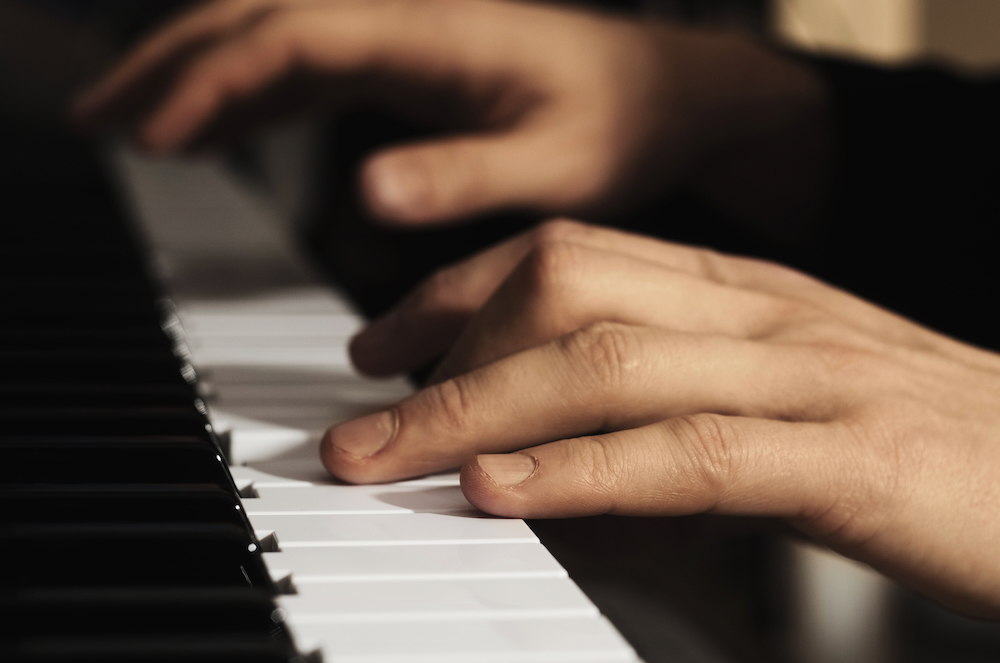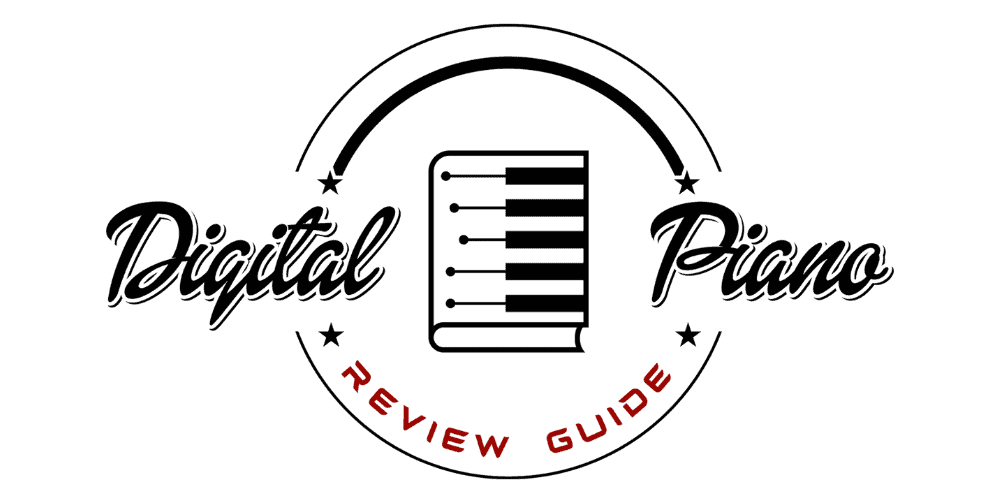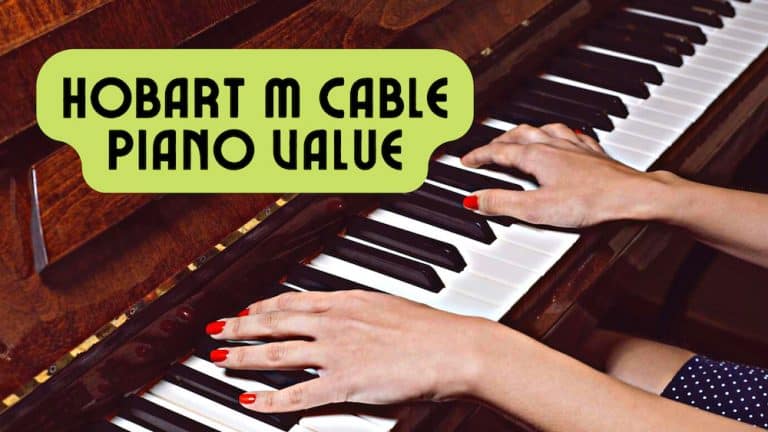Fischer Piano Value – Assessing a Fischer Piano’s Worth

If you’re seeking to potentially buy a Fischer piano, and you’re interested in learning the Fischer piano value for a specific piano model, you’ve come to the right place. In this article, we’re going to break down how to examine a Fischer piano’s true worth, as well as highlight a handful of examples of what Fischer piano’s sell for on the open market to give you a better idea of how well they’re valued.
Assessing a Fischer Piano’s Worth
The Fischer Piano company was one of the biggest, most widely recognized piano manufacturers of the 19th century. They were consistently known for producing high-quality, exceptional instruments, and the name has not lost its value. In the Great Depression, the piano company was absorbed into the Aeolian-American Piano Corporation, but Fischer-brand pianos were produced for several decades after their assimilation.
1) Our first piano is a Fischer Dark Walnut Console Piano from the Alamo Music Center. Although no date is provided, the pictures show a piano in very good condition—though obviously bearing some nicks and scratches, that’s normal for any piano. The piano sold for just $500. No information is provided about the sound quality or history of the instrument, although there is a statement saying that technicians have inspected it and deemed it in “optimal playing condition.”
Alamo Music Center is a reputable seller, so this is probably true. With that said, $500 does feel a bit low, so you might be getting a pretty nice deal here. The quality seems good, cosmetically and sound-wise, and it doesn’t appear to have any significant damage—I wouldn’t sell it for anything less than $1000.
2) Our next piano is a 1935 Fischer Baby Grand Piano made of beautiful mahogany, selling for $4000 through Piano Mart. This really is a beautiful piano, with natural colors that melt into each other and a gloss finish that catches the eye. I’m truly very surprised by how good the condition looks for it being built in 1935.
Even if it wasn’t refurbished or restored, I’m sure it must have been given a paint job or new finish recently. However, even though it looks good, I’m not sure how the sound quality is since there’s no information on restoration. The sound board looks very much intact, but the strings could be loose. I’m going to say, tentatively, that this is a good price—especially for a baby grand—as long as the sound quality is good and there’s no hidden damage.
3) The third piano to consider is another baby grand—a J&C FISCHER Baby Grand , also selling through Piano Mart for $8500—over double the other baby grand. I was surprised by this at first, but this piano includes a digital element that the other piano does not—a built in CD player that also comes with a remote (likely done during some kind of refurbishment or restoration.
This is akin to a more digitalized version of a Duo Art Player Piano (more information on those pianos here). That element is going to add a lot more value, but I’m not sure it’s $4,500 more. The description says everything is in working order, which I don’t doubt! However, depending on how recently it was touched up or restored, I’d place the value at nearer to $6,000, myself.
4) Next we have a Fischer Victorian Upright Piano , beautifully carved and selling for $16,000 from the Antique Piano Shop. Although it is quite an old piano, produced in 1899, it’s an absolutely gorgeous instrument—carved quite intricately from rich Honduran mahogany, with several pictures to highlight the extent of a thorough restoration.
This is a special “upright grand,” said to be the most magnificent of all the Fischer products: it was an upright specifically designed to rival the sound of grand pianos of other manufacturers. I may be biased, but this is one of the most gorgeous instruments I’ve ever seen, and I’m sure the restored sound is amazing, not to mention its rarity—I wouldn’t price it any less than $20,000.
5) The fifth piano is Vintage Fischer Baby Grand , manufactured in 1926 and selling through Piano Mart for an impressive $23,500. The wood is satin walnut—not as expensive as mahogany or ebony, but still a beautiful color. Although the age means the value should be quite low, it was completely reconditioned in 2004, which substantially improves the value.
However, depreciation does start over when a piano is reconditioned. Although the keys have some normal wear, everything is said and looks to be in excellent condition. The Ampico player within (similar to the Duo-Art reproduction style; here’s some more information) does add significant value. There are quite a few factors to consider, so this value is a bit tricky to pin down—however, I do think the proposed price is a bit high. I’d value it closer to between $16,000 and $18,000.
6) Our final piano is a special case: a very rare Beautifully Restored Fischer Square Grand Piano, selling for a whopping $38,000 from Piano Mart. This is quite a rare piano in that square grands have a very unique shape and sound—and really aren’t produced very often. There’s also quite a bit of ornate detail in the form of intricate carvings and golden accents, as well as a pearl inlay across the name board.
Manufactured nearly 150 years ago in 1878, the piano was restored in 2005. Although seventeen years does cause a piano to depreciate significantly—to about 50% of its original price—this is a rare find, and some beautiful craftsmanship. As long as the sound of the piano lives up to the standards, you’re probably going to be getting your money’s worth if you love vintage pianos.
As you can see, the value of a Fischer piano is going to range anywhere from a couple thousand dollars to $30,000 for a new or completely restored grand (or square grand piano). The rarity of the piano type is an uncommon but important factor, and the name-brand recognition plays a role in the high prices, as well.
- You Might Also Like: Everett Piano Value
Factors That May Affect Piano Value

Although all piano brands are slightly different, there are some common elements that all piano appraisals must include to accurately estimate the value. These elements include the age, the depreciation, the condition and any cosmetic or functional damages, the sound quality, and the material. Pianos do depreciate, similarly to cars, at an approximate rate over time: about ten years after production, a piano will be worth about 55% of its original price.
After that, depreciation slows considerably. Restoration can partially or fully restore its value, depending on how much work is done. To find the depreciation, you’ll need to find the age. The easiest way to do this is by finding the serial number. Once you find it, use it to find the age of your piano by using this site, which organizes serial numbers by brand and gives you an associated date range of production: Piano Information and Appraisal.
Once you have the age, approximate how much the value may have depreciated. Once you have this information, you can build any value lost or gained from the other factors discussed.
Condition is another big element to consider. Cosmetic damage is usually mostly overlooked, unless there are significant gouges in the frame or damage to one of the legs—something that severely damages the aesthetic worth of the instrument itself, not including the sound. Functional damage is a different story—pianos are ultimately bought to be played, and not to be used as a decoration.
If there’s significant damage to the keys, strings, hammers, or other pieces that create sound, the piano’s worth is going to suffer significantly. In this case, restoration may be your only option: here’s an article explaining a couple parts of Piano Restoration.
The kind of wood used also plays a role, though not as importantly as some other factors. Mahogany and ebony are usually going to be the most expensive, but certain kinds of varnish can have an impact, too. Sound quality also plays a large role, and this can be affected by damage, as well. More often, though, the strings just need to be tuned.
- You Might Also Like: Gulbransen Piano Value
How to Determine the Value
It is definitely not a cut-and-dry task to evaluate the worth of a piano and assign it a value. It involves analyzing several subjective factors and compiling the data to come to a single conclusion, often with several moving parts. Beginners often feel wary about doing an appraisal themselves—luckily, there are several piano sellers that offer appraisals all over the country.
Appraisals are generally anywhere from $50 to $500, depending on who you choose, and are usually done in-home (or wherever the piano is located). It may be fairly doable to determine the impacts of each element on one’s own, but an appraiser can help you put all of that together to come to a conclusive range of values.
- You Might Also Like: Wurlitzer Piano Value
Conclusion
Although we’ve tried hard to estimate the true Fischer piano value, a piano’s worth is ultimately based on a large variety of factors (which can include things like age, if the piano is overdue for a tune up, or if the piano is in dire need of an outright restoration and more). Still, we hope this article has better been able to enlighten you on what you can expect to purchase (or sell) your Fischer piano for on the secondary market!
If this article helped you, please “like” our Digital Piano Review Guide Facebook page!






